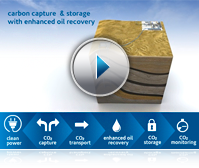Study shows CCS can play key role in reducing greenhouse gas emissions!
“Meeting California’s Long Term GHG Reduction Goals,” a study by Energy and Environmental Economics, Inc. (E3), identifies Carbon Capture and Storage (CCS) as one of three technologies that can significantly reduce carbon dioxide (CO2) produced during the generation of electricity, a major contributor to greenhouse gas in California.
The study, sponsored by Hydrogen Energy California, explores different possible approaches to meeting California’s goal of dramatically reducing greenhouse gas emissions by 2050 while maintaining economic growth. Specifically, the report investigates what it would take to implement Governor Schwarzenegger’s Executive Order S-03-05, which calls for an 80% reduction in emissions below 1990 levels by 2050.
The report finds that achieving this level of emissions reductions requires three key simultaneous actions:
- Dramatically improving the efficiency of energy use in all sectors
- Switching energy use to electricity everywhere possible, including electric vehicles
- “Decarbonizing” the electricity sector by building low-carbon power generation
There are three possible approaches to decarbonizing the electricity sector, which can be used in various combinations:
- Renewable energy
- Nuclear power
- Carbon capture and storage (CCS)
Each of these approaches faces both challenges and opportunities:
- Renewable energy development, required under the California’s 33% Renewable Electricity
Portfolio Standard, will play an expanding role in the state’s energy portfolio. Yet permitting for
new sites and transmission lines continues to meet environmental opposition. Additionally, the
intermittent output profile of wind and solar raises questions of grid reliability without big
investments in energy storage. - New nuclear power is banned in California until there is a permanent federally repository for
nuclear waste. Finding safe and socially acceptable ways to deal with nuclear waste remains a
challenge for nuclear power. - CCS technology has been developed, but is not yet deployed commercially. CCS development
would diversify the state’s energy resources, mitigating the risk of relying on renewables or
nuclear power alone. CCS also has the potential to provide a low-carbon dispatchable resource
that can help integrate high penetrations of intermittent renewable energy.

